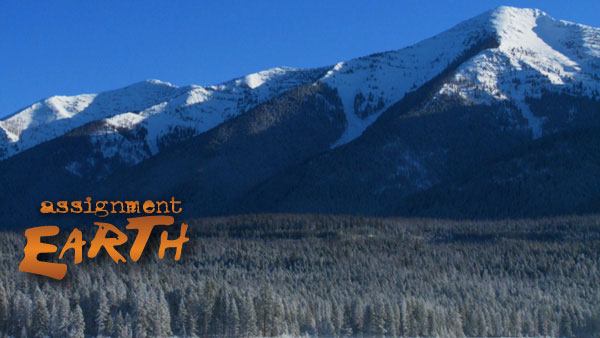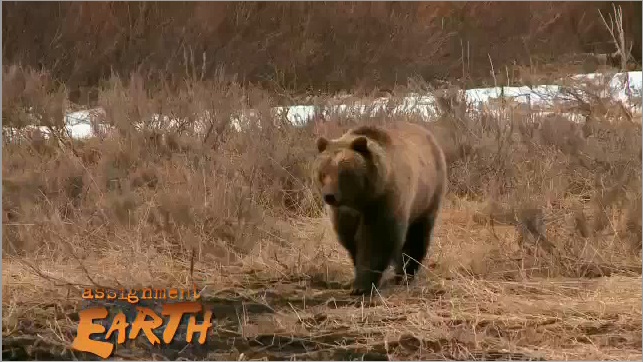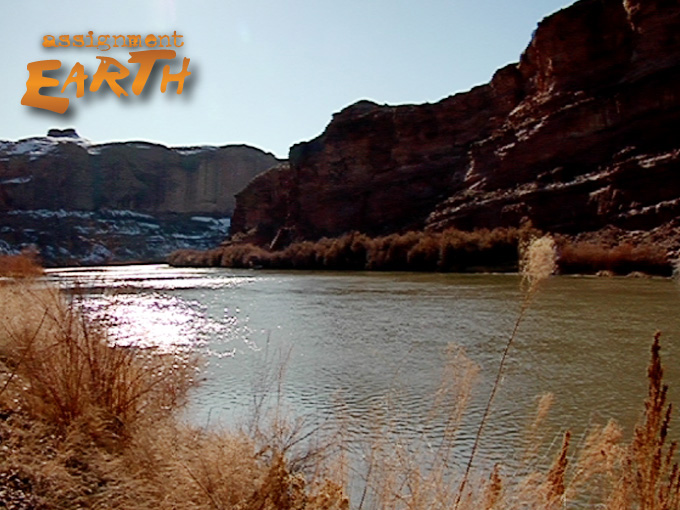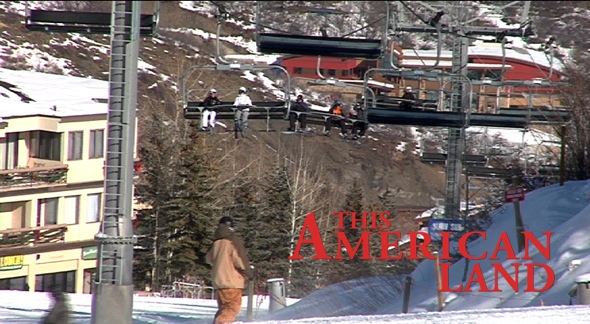 The Montana Legacy Project buys 310,000 acres of prime timber holdings to prevent real estate development and save the lands for public use and sustainable forestry. The deal will cost $490 million, the largest single conservation purchase in U.S. History.
The Montana Legacy Project buys 310,000 acres of prime timber holdings to prevent real estate development and save the lands for public use and sustainable forestry. The deal will cost $490 million, the largest single conservation purchase in U.S. History.
Assignment Earth
Assignment Earth, Environmental Protection, This American Land / 10.05.2010
Protecting Montana's Wild Legacy – Carnivores – The Joy Trip Project
 With government support, a huge land purchase by conservationists protects prime habitat for grizzlies, mountain lions and other sensitive species. In order to maintain wilderness habitat in the Swan Valley of Montana The Nature Conservancy and the Trust for Public Land has bought and set aside 367,000 acres in the Montana Legacy Project.
Land once the owned by the state’s biggest private property holder Plum Creek Timber Company is now closed to development. Parcels scattered throughout forested area will be protected as corridors for the free movement of many wild species including large carnivores.
With government support, a huge land purchase by conservationists protects prime habitat for grizzlies, mountain lions and other sensitive species. In order to maintain wilderness habitat in the Swan Valley of Montana The Nature Conservancy and the Trust for Public Land has bought and set aside 367,000 acres in the Montana Legacy Project.
Land once the owned by the state’s biggest private property holder Plum Creek Timber Company is now closed to development. Parcels scattered throughout forested area will be protected as corridors for the free movement of many wild species including large carnivores.
Assignment Earth, Environmental Protection, Video / 27.04.2010
Beetles & Bears – The Joy Trip Project

At high elevations in the northern Rockies, mountain pine beetles are killing countless whitebark pine trees, a major source of food for wildlife including grizzly bears.
Building captive colonies for eventual re-introduction to the wild, scientists from Atlanta rescue endangered frogs and other amphibians threatened with extinction by a fatal fungus spreading through South American forests.
Assignment Earth, Environmental Protection, Video / 06.04.2010
Nuclear Power Confronts Scarce Water – The Joy Trip Project

Assignment Earth, Environmental Protection, This American Land, Video / 10.03.2010
Ski Resort Report Card – The Joy Trip Project
 For 10 years, the Ski Area Citizens Coalition has published its ski area environmental report card, a rating system that grades ski resports across the west according to their impact on the natural environment.
Paul Joyce, a conservation assoicate at the environmental protection group Colorado Wild, says a ski resort’s grade depends on how well it plays in its own backyard.
“When a ski area expands into the back country, expands into habitat, affects wildlife, affects vegetation, thereby affecting water, watersheds, water quality,” Joyce said, “those things weigh really heavy with the report card.”
Resorts owned by the Aspen Skiing Company dominate the highest rated resorts in the west.
“People listen to us in part because we’re an interesting news story, but also because we’re business people.,” Auden Schendler, environmental affairs director at Aspen Skiing. “Ultimately we’re not environmentalists. We’re business people. And we see climate changes as an existential threat to business.
In this edition of This American Land we explore ski resorts that employ environmentally sustainable practices to protect natural areas that surround their slopes.
For 10 years, the Ski Area Citizens Coalition has published its ski area environmental report card, a rating system that grades ski resports across the west according to their impact on the natural environment.
Paul Joyce, a conservation assoicate at the environmental protection group Colorado Wild, says a ski resort’s grade depends on how well it plays in its own backyard.
“When a ski area expands into the back country, expands into habitat, affects wildlife, affects vegetation, thereby affecting water, watersheds, water quality,” Joyce said, “those things weigh really heavy with the report card.”
Resorts owned by the Aspen Skiing Company dominate the highest rated resorts in the west.
“People listen to us in part because we’re an interesting news story, but also because we’re business people.,” Auden Schendler, environmental affairs director at Aspen Skiing. “Ultimately we’re not environmentalists. We’re business people. And we see climate changes as an existential threat to business.
In this edition of This American Land we explore ski resorts that employ environmentally sustainable practices to protect natural areas that surround their slopes.



You must be logged in to post a comment.